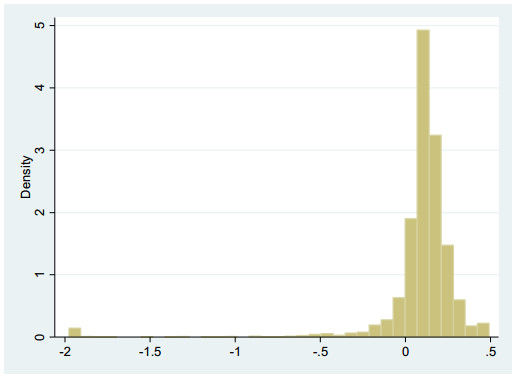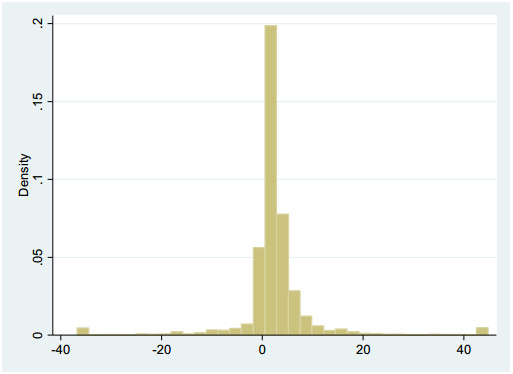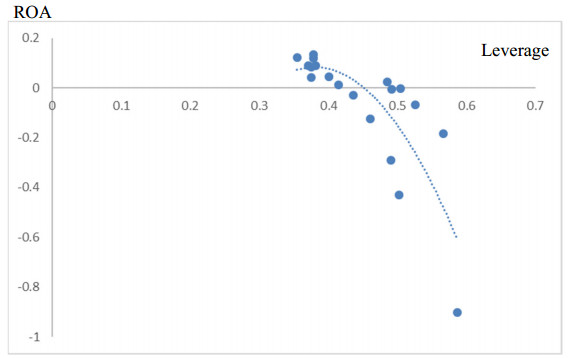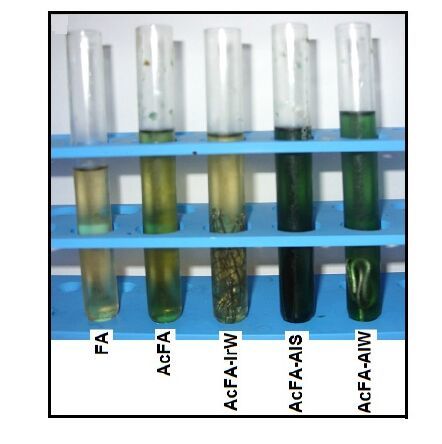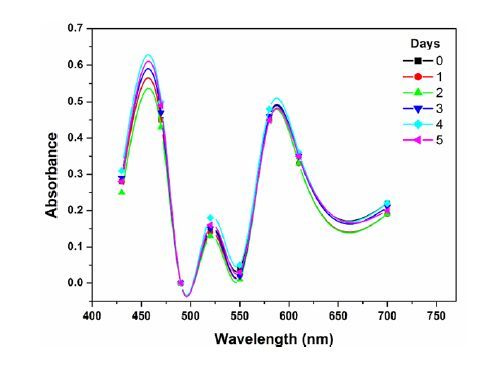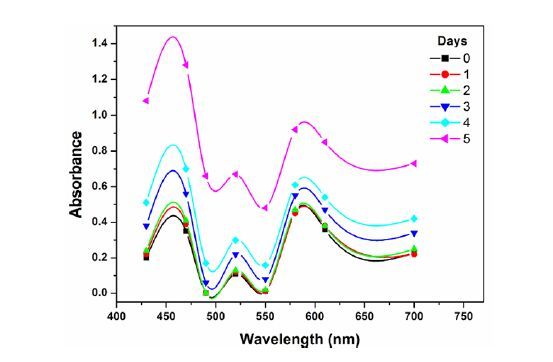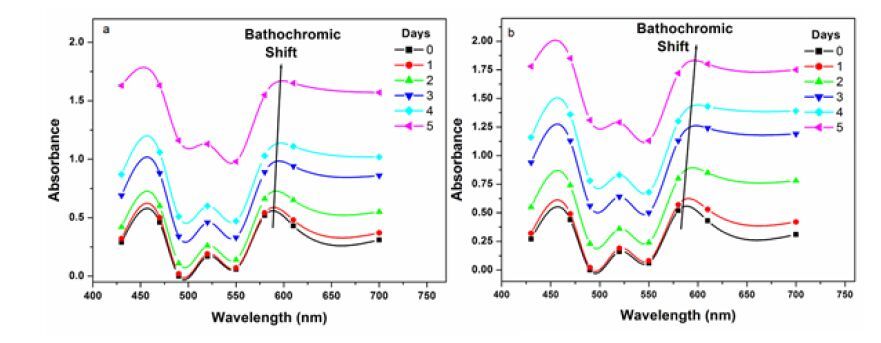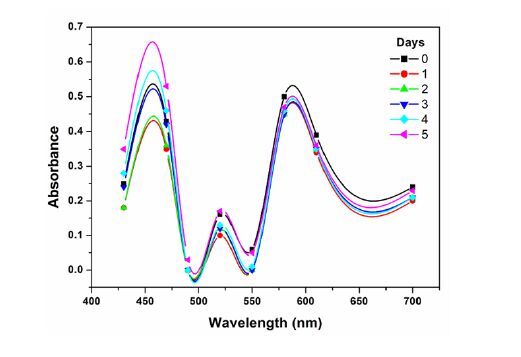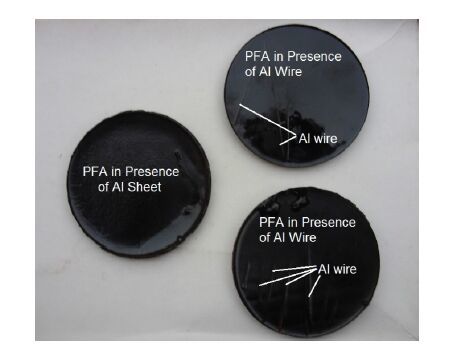Aluminium and iron are widely used in construction sectors for the preparation of advanced composites with epoxy resins as matrices. In recent times, there are several reports on the polymerization of polyfufuryl alcohol (PFA) a thermoset bioresins from furfuryl alcohol (FA). FA is obtained from waste of sugarcane bagasse. In this work, first the possibility of curing PFA from FA in the presence of aluminium or iron has been explored. Absorbance results from colorimeter/spectrophotometerindicated that the curing of FA to PFA in presence of aluminium started easily while in presence of iron the curing of FA to PFA could not start. Based on the above results, aluminium wire reinforced composites were successfully prepared with three different weight fractions (0.13, 0.09 and 0.07) of aluminium wire. The mechanical properties of these composites were determined theoretically and reported.
1.
Introduction
The debt-equity choice (named as capital structure decision) and its effects on value creation is one of the mainstream finance topics since the seminal paper by Modigliani and Miller (1958) and their hypothesis of irrelevance. Since that time, several theories have been developed to explain the capital structure of a firm including the Pecking Order Theory, Trade-off Theory, and the Agency Cost Theory. Still today, the dynamics of business, characterized by a high dynamism and competitiveness, make decisions on capital structure crucial for any company.
Although the current levels of debt and equity may vary somewhat over time, most firms try to keep their financing mix close to a target capital structure (Díez-Esteban, et al., 2017). A firm's capital structure decision includes its choice of a target capital structure, the average maturity of its debt, and the specific types of financing it decides to use at any time. With operating decisions, as (Brigham and Ehrhardt, 2011), managers should make capital structure decisions that are designed to maximize the firm's intrinsic value.
However, literature results on the relationship between capital structure and firm performance are still inconclusive. While some recent studies find a positive relationship between leverage and performance (Le and Phan, 2017; Gleason et al., 2000), others report either a positive (Fosu, 2013; Margaritis and Psillaki, 2010) or a non-significant relationship (Phillips and Sipahioglu, 2004). This divergence in the empirical findings can be explained by the competing (and sometimes complementary) theories developed in the literature, namely the trade-off, the pecking order and the agency theories.
One of the relevant dimensions in better understanding how leverage affects firm performance has to do with the diverse configuration, in terms of capital structure, of each industry. According to Teker et al. (2009), one of the corporate characteristics that is related to capital structure has to do with the industry specificities. In fact, recent studies focus on analyzing this phenomenon in specific industries, like high techs (Sardo and Serrasquero, 2021). Hence, we aim to examine this relationship with a focus on the hospitality industry, where limited empirical evidence exits.
Our focus on the hospitality industry is due to its unique nature. Singal (2015) demonstrates that the hospitality industry is highly competitive, presents high leverage ratios and is capital intensive, given that firms in the industry keep a higher amount of fixed assets (Jiang and Dalbor, 2017) which increases the use of external financing. The study of Singal (2015) compares the financial structure of hospitality companies (109 unique firms) with non-hospitality companies covering 30 years and over 3,000 firms across industries in the U.S. It is documented that hospitality firms have higher leverage ratios by 9.8%. Accordingly, a recent study by Damodaran (2019) shows that, companies in the hospitality industry, have higher leverage ratios compared to the market average (Figure 1).
Considering the above, our research focuses on analyzing the capital structure puzzle in the context of the hospitality industry. Specifically, we study whether a certain capital structure in this high indebtedness industry has an impact on firm performance. By using the data of 313 listed U.S. hospitality companies for the time period of 2001 to 2018, we find that the degree of leverage is negatively related to firm performance. As a further analysis, we examine the non-linear relationship between capital structure and firm performance by following the three-step procedure proposed by Assaf and Tsionas (2019). We find a significant inverted U-shape relationship between leverage and firm performance.
Our study makes several contributions to the literature. To our knowledge, the paper is the first in terms of providing evidence on the relationship between a firm's financial leverage and performance for the whole hospitality industry while previous studies focus only on one of the sub-industries (namely restaurants, hotels and casinos). Therefore, we provide empirical evidence on the examined research questions by using the complete industry data which also lets us to compare the findings for sub-industries. Besides, our results reveal important implications for managers and practitioner. First, according to the Trade-off Theory, an optimal leverage level should be targeted in order to increase firms' performance. Second, hospitality firms should implement alternative business strategies since they hold excessive leverage ratios, which negatively affect their performance.
Our results are drawn from applying appropriate econometric techniques. While previous studies in the hospitality field implement OLS or fixed-effects panel data techniques, we additionally use two step system GMM to control for endogeneity. Additionally, several robustness checks are performed in the paper.
The paper is structured as follows. In Section 2, we present the theoretical framework and hypothesis formulation; Section 3 presents the empirical design; results and robustness test are discussed in sections 4 and 5; and finally, Section 6 collects the conclusions and poly implications.
2.
Capital structure and hospitality firms' performance
The study of capital structure determinants and its impact on firm performance has been one of the core issues in finance. The seminal Modigliani-Miller (MM) theory argues that firm value is irrelevant to its capital structure under certain assumptions (Modigliani and Miller, 1958). Following this theory, the literature has developed three main alternative explanations, namely the trade-off, the pecking order and the agency theories (Le and Phan, 2017). The trade-off theory posits that there is a trade-off between benefits and costs of using debt in order to maximize firm value (Kraus and Litzenberger, 1973). The benefit of using debt is the tax shield as the interest expenses are tax deductible while use of additional debt is associated with increasing financial distress. The value difference between indebted and unindebted firms is related with the benefit of using debt (the tax shield) minus the costs (financial distress) (Abdullah and Tursoy, 2019). Accordingly, it predicts a positive effect of leverage on firm performance.
Pecking order theory argues that a firm will follow a specific hierarchy for financing (Myers and Majluf, 1984). Companies should use internal financing first, then debt is preferred, and the last option should be equity issue due to information asymmetry. Hence, according to these principles one should expect a negative association between leverage and performance. Although the theory argues that companies should prefer debt over equity for value maximization, optimal leverage ratio is not identified (Abdullah and Tursoy, 2019).
Agency theory posits that as the ownership and management is separated, there exits principal-agent conflicts which lead to agency costs for the firm (Jensen and Meckling, 1976; Jensen, 1986). An optimal capital structure can maximize firm value by minimizing the costs derived from that conflict of interest.
It can be concluded that considering those theories, leverage may exert a positive or a negative influence on profitability (Dalci, 2018).
There is a limited number of studies focusing on firms in hospitality industry, and with mixed results. According to Phillips and Sipahioglu (2004), the level of debt is not related to the financial performance of 43 listed companies related with operating hotels in U.K. However, Mao and Gu (2008) show that financial leverage has a negative effect on the performance of U.S. restaurants, arguing that the use of higher debt outweighs its benefits in the industry and reducing the debt level could lead to higher performance1. Jang and Tang (2009) find that financial leverage's impact on return on assets (ROA) is curvilinear for hotels in the U.S while international diversification has no direct effect on profitability, its' effect is indirect through interaction with the leverage. By using the data of listed U.S. casino firms, Seo (2018) documents that leverage has a positive impact on ROA and Tobins' Q. However, it is also shown that leverage and performance are related through an inverted U-shaped relationship. This implies that low to moderate levels of debt can lead to a positive performance and excessive borrowing damages the performance. Another strand of the literature examines the effect of leverage on stock returns. Muradoğlu and Sivaprasad (2014) analyze whether leverage is value relevant to the equity investor in the hospitality industry. It is found that leverage has a negative effect on cumulative abnormal returns. Investors can earn abnormal returns up to 0.53% by investing in hospitality firms with medium leverage. As this scarce number of studies show, there is not yet a consensus on the impact of leverage on the performance for companies in the hospitality industry.
1From another perspective, we can also infer that companies with lower performance need to take on higher debt in order to stay competitive in the industry.
Based on those theoretical discussions, hypothesis 1 is developed as follows2:
2We propose hypothesis 1 in an alternative manner (null and alternative) since the theories are not conclusive in the relationship. In the latter empirical section, the model tests whether the null hypothesis is significant or not.
H1a: Leverage has a positive effect on firm performance.
H1b: Leverage does not have a positive effect on firm performance.
A part of the literature documents that there is a non-linear relationship between leverage and firm performance. The inconclusive findings in the hospitality literature can imply that the costs and benefits of leverage are contingent on the level of leverage (Jang and Tang, 2009). After a certain threshold level, the costs of leverage can exceed the benefits of using debt leading to a negative performance for companies. At lower levels of debt, firms can benefit from the tax shield and decreasing agency costs leading to a better performance. A higher level of debt can increase the costs of debt overcoming the benefits which then lead to a lower performance (Le and Phan, 2018). Therefore, the relationship between leverage and firm profitability can be curvilinear, implying the existence of an optimal leverage. Hence, we propose a second hypothesis as follows:
H2: Leverage and profitability have a curvilinear relationship.
3.
Empirical design
3.1. Sample and model specification
The sample used in this research consists of 313 U.S. hospitality companies over an eighteen-year period (2001–2018) with a total of 3250 observations. The criteria for company's selection are based in obtaining a balanced panel data set for applying appropriate GMM methodology. Hence, firms in our sample have, at least, data for three consecutive years (Demir et al., 2019).
Companies in our sample have been grouped in four sub-industries: airline services, hotels and resorts, leisure and recreation and tourist services, according to the TRBC (Thomson Reuters Business Classification) code provided by THOMSON EIKON database. The number of companies by hospitality sub-industry are reported in Table 1.
Our model specification is based on previous papers on this field, such as Le and Phan (2017), Mao and Gu (2008) or Sipahioglu (2004). Our primary model is expressed as:
where, i indexes firms or industries, t indexes time (generally calendar years), and εi, t stands for the stochastic error. The β0 are firm or industry fixed effects and the model also includes sub-industry and year dummies (SUBINDUSTRY and YEAR, respectively).
3.2. Variables description
Firm-level data to build up the variables specified in (Equation 1) has been obtained from THOMSOM EIKON database. The possible effect of outliers or data errors has been overcome by winsorizing all variables at the 1st and 99th percentiles.
3.2.1. Firm performance
According to previous related research, two alternative measures of firm performance have been used. First, to evaluate accounting performance we introduce the return on assets ratio (ROA), calculated as the ratio of net income to total assets (Ibhagui and Olokoyo, 2018; Le and Phan, 2017; Davydov, 2016; Jianporn and Liu, 2008). Second, to account for a market-based measure, we include the Tobin's Q (TOBIN Q), calculated as the ratio of the market value of a firm to its book value (Ibhagui and Olokoyo, 2018; Le and Phan, 2017; Davydov, 2016).
3.2.2. Capital structure
The relevant independent variable of our study is a firm's capital structure or leverage level. As discussed in the theoretical section, apart from the traditionally financial importance of leverage in the performance puzzle, in the case of the hospitality industry it has been widely proved that their indebtedness ratios are, on average, higher (Demir et al., 2019; Singal, 2015; Pacheco and Tavares, 2017). To measure capital structure, we first use the total debt to total assets ratio (TLEV). In a further robustness test, we utilize both the long-term debt (LLEV) and short-term debt (SLEV) to total assets ratios (Le and Phan, 2017).
3.2.3. Firm-level variables
According to prior studies on this topic (Le and Phan, 2017; Davydov, 2016), we have introduced several firm-level variables in our model.
To control for any systematic effects generated by firm size, our model includes (SIZE), measured as the natural logarithm of total assets. Size effect is expected to be positive, i.e., larger firms may increase their profitability because they can diversify better and have more opportunities to invest in other businesses (Díez-Esteban et al., 2016; Hernández, 2019).
A company's risk is proxied by the standard deviation of the ROA ratio (DROA), using the previous three years to calculate the deviation (Le and Phan, 2017). A negative relationship between risk and corporate performance is expected since higher risk implies higher financial distress cost (Tian and Zeitun, 2007) and a higher corporate default likelihood (Bloom and Milkovich, 1998) and, hence, reducing profitability.
Growth opportunities are measured through each firm sales growth (SALES). Previous literature has widely demonstrated that firms with greater growth rates create more profit and value from investment opportunities. Using Tobin's Q, King and Santor (2008) find a positive relationship between sales growth and performance, whereas Jiraporn and Liu (2008) find the same relationship using ROA as a proxy for firm performance. Liquidity is also a relevant variable for firm performance (Cho, 1998). From an agency perspective, cash management can be used to mitigate possible conflicts of interests and, hence, increase firm performance and value. Thus, we include the variable (CASH) calculated as the ratio of total cash plus cash equivalents to total assets (Sucurro and Constanzo, 2019). Lastly, as a firm's performance is conditioned by the general macroeconomic conditions, we include in our model the annual percentage growth rate of GDP at market prices based on constant local currency (Nenu et al., 2108). It is expected that in periods of economic growth, firms are able to outperform better. A summary of the proposed relationships is recorded in Table 2.
3.2.4. Methods
To characterize the main values of the considered variables, we first show a descriptive analysis of our sample. Then, a multivariate analysis is carried out to test the validity of our hypotheses.
In this sense, our explanatory analysis begins by a pooled OLS estimation, a common technique for estimation of panel data. Nevertheless, given the high probability of the appearance of unobserved individual effects (Moudud-Ul-Huq, 2019), we then perform fixed-random effects (FE-RE) estimations. The rationale is that, although OLS estimations can be consistent, they are not efficient due to heteroskedastic and serial autocorrelation. The choice between the results offered by the FE and the RE model are determined by the F-test for the FE model, the Wald test for the RE model and the Hausman test (Ampenberger et al., 2013).
However, while fixed effects and random effects models can control for unobserved heterogeneity, they do not account for the endogeneity issue, common in panel data estimations, and originated by unobserved characteristics of firms, simultaneity and dynamic endogeneity (Villarón-Peramato et al., 2018; Roberts and Whited, 2013). Thus, to treat the possible endogeneity, we introduce the lagged term of the dependent variable and estimate our regressions using system estimator, an enhanced version of the generalized methods of moments (GMM) (Blundell et al., 2000)3. Following this procedure, our estimations should not show second-order serial correlation in the residuals and use valid instruments (Arellano and Bond, 1991). Therefore, in all estimations we report (AR2) p-value to show that the error terms in the estimations do not have a second-order serial correlation. Besides, the Hansen test of over-identifying constraints confirms the validity of the instruments.
3The system estimator improves the fixed effect method (estimating a highly persistent lag coefficient), is not affected by panel imbalance and is consistent across a scope of endogeneity in the presence of serial correlation (Flannery and Hankins, 2013). A thorough overview of the GMM system estimator techniques outperforming can be found in Roodman (2008).
4.
Empirical results
4.1. Descriptive statistics
Summary statistics of all considered variables are shown in Table 3. Firm performance is represented by (ROA) and (Tobin Q). The average of return on assets is 9.1% whereas the average value of Tobin's Q is 2.41. Both values reveal that, on average, the hospitality industry performs better than other industries4. For instance, Ibhagui and Olokoyo (2018) find a mean value of ROA of 8% and a mean value of Tobin's Q of 0.93, whereas Davydov (2016) finds a 9% and 1.31 respectively. The distribution of both dependent variables is plotted in Figures 2a (for the case of ROA) and 2b (for the case of Tobin's Q).
4Our sample values are in line to those reported by Singal (2015), who compares some structural characteristics of the hospitality business to other industries such as utilities, manufacturing, or financial services for the U.S.
Regarding capital structure, the average of total book leverage (TLEV) is 41.5%, confirming that hospitality firms are highly indebted (Demir et al., 2019; Singal, 2015). It is also remarkable that the sample includes not-indebted firms and firms with severe financial problems. About the time horizon of the debt, the mean ratio of long-term debt (LLEV) is 31.9% and much higher than short-term debt (SLEV), which is only 7.6%. These values confirm that hospitality firms are capital intensive (especially in land and building), what must be financed by long-term debt (Demir et al., 2019).
To better understand the performance-leverage relationship in our sample, Figure 3 plots the yearly average ROA for its correspondent yearly average total leverage. At a first glance, the data supports the proposed negative relationship between firm leverage and performance. Nevertheless, an inverted U-shape can also be expected. The apparently contradictory results will be analyzed in the multivariate analysis.
Pearson correlations between the considered variables are reported in Table 4. Total debt and short-term debt (TLEV and SLEV) ratios are found to be negatively related to both measures of firm performance (ROA and Tobin Q) whereas such relationship is positive for the long-term debt (TLEV) ratio, with 1% significance. Besides, multicollinearity among the variables is not a problem.
4.2. Multivariate analysis
We first run a pooled OLS regression, which results are reported in Table 5. Columns 1 and 2 report results for ROA, whereas results in columns 3 and 4 are for Tobin Q. In order to make the results more consistent, results in columns 2 and 4 include the command robust, which calculates a robust variance estimator based on a varlist of equation-level scores and covariance matrix to avoid heteroskedasticity. In all four estimations the degree of leverage is negatively related to firm performance. Specifically, the coefficient of total leverage in column 2 is -0.064 (-1.914 in column 4), which denotes that an increase of 1% in the total leverage ratio will lead to a decrease of 0.06% in ROA (a decrease of 1.914 in Tobin's Q), maintaining all other variables constant.
The validity of the models is confirmed by the F-test, with all p-values below 1%. Moreover, adjusted R-squared values are high for the case of ROA, but not for Tobin's Q. Lastly, the variance inflation factor (VIF) values below 4 reveals that there are not multicollinearity issues (Hair et al., 2006). Pooled OLS regressions do not account for unobserved individual effects. That is why in Table 6 we present the outcomes of FE and RE models. Again, all estimations include adjusted standard error (robust).
Again, there is a negative relationship between leverage and firm performance with 1% significance. The statistics reveal that the pooled OLS regression is worse than the FE model whereas the FE model is preferable to the RE one. A big concern in the estimations is that R-squared values in all regression are not acceptable, especially in the case of Tobin's Q as dependent variable, although the F-test results show that the fitness of the models is quite good. Given that the previous models do not address the endogeneity issue, we lastly perform a GMM analysis which results are reported in Table 7, once again confirming the negative relationship between a firm's leverage ratio and performance with 1% significance. Both models (ROA and Tobin Q) are well specified, as the Hansen test confirms the validity of the instruments used and there is not second-order serial correlation.
Control variables present the expected relationship with firm performance, although the significance varies across models. Firm size (SIZE) is positively related to firm performance confirming that larger firms may increase their profitability because they have a greater ability to diversify and better opportunities to invest in unrelated business (Díez-Esteban et al., 2016). The negative relationship between risk (DROA) and corporate performance is also obtained due to a higher financial distress cost (Tian and Zeitun, 2007) and a higher corporate default likelihood (Bloom and Milkovich, 1998) of corporate risk. Sales growth (SALES) is also positively related to firm performance since firms with greater growth rates create more profit and value from investment opportunities, as well as (CASH), according to the agency role played by liquidity management. Lastly, GDP growth has no statistically significant effect neither for ROA nor for Tobin's Q in the pooled OLS, FE and RE models.
5.
Robustness tests and additional analysis
To test the robustness of the previous results we change how capital structure is measured. Hence, we replace total book debt by the long-term debt (LLEV) and the short-term debt (SLEV) ratios, which results are reported in Table 8.
Both leverage ratios are again negatively related to firm performance (both ROA and Tobin's Q) with a significance of 1% and 5%, meaning that, no matter the time horizon of a company's indebtedness, there is always a negative influence on performance.
Finally, an additional analysis is performed to test Hypothesis 2 examining the curvilinear relationship between capital structure and firm performance (Le and Phan, 2017) as revealed by the data in Figure 3. The analysis has been carried out following the three-step procedure proposed by Assaf and Tsionas (2019): find a significant negative sign for X2 coefficient, the slope found is step enough at both tails of the data range and the turning point of the curve falls within the range of the data. Proceeding this way, results of the non-linear relationship are reported in Table 9.
We find a significant inverted U-shaped relationship between leverage and firm performance. The turning point in the case of ROA is 0.150 whereas for Tobin Q is 0.163. It means that leverage levels under 15% positively affect ROA and leverage levels above 15% negatively affects return on assets (the rationale is the same for Tobin's Q). According to the correct interpretation proposed by Assaf and Tsionas (2019), we can conclude that the negative relationship between capital structure and firm performance is prevalent in the hospitality industry.
6.
Conclusions and policy implications
We analyze the so-called capital structure finance issue in the U.S. hospitality industry setting. Using a sample of 313 listed companies for the period 2001–2018, our main finding suggests that given that hospitality firms are highly indebted, there is a negative relationship between leverage and performance, according to the pecking order principles. Our results are consistent for two alternative measures of performance (ROA and Tobin's Q) and when applying diverse econometric techniques. Specifically, going beyond previous studies based on OLS or FE/RE methodologies, we employ system GMM panel data techniques to avoid the endogeneity issue.
By applying the three steps procedure suggested by Assaf and Tsionas (2019), we also find that, mathematically, it exits an inverted U-shape relationship between firm's leverage and performance. However, in the case of the U.S. hospitality firms, that relationship is only relevant in the negative side of the model.
Our study provides several implications for economic actors. On the one hand, managers should weight the costs and benefits of using additional debt. They should target their optimal leverage levels in order to increase the performance of the company. Investors should follow the leverage level of hospitality companies that they invest or plan to invest. Once the threshold level of debt is exceeded, the performance of the company is likely to decrease. Muradoğlu and Sivaprasad (2014) show that investors can earn abnormal returns up to 0.53% by investing in hospitality firms with medium leverage. So, investors can make a return by investing on companies performing closing to their optimal levels. A higher level of leverage will lower the performance leading to lower stock returns.
On the other hand, our results reveal that hospitality firms in the U.S. maintain excessive leverage ratios, what negatively affect their performance. Hence, a need for implementing alternative strategies is compulsory. As previous literature has shown, there is a relatively new trend in the hospitality business models called ALFO (assets-light and fee-orientated) strategy (Li and Singal, 2019; Demir et al., 2019). This strategy is based in changing the traditionally capital-intensive focus of hospitality firms to technological and loyalty-based assets. Proceeding this way, the need for financing highly-cost fixed assets is reduced and, hence, the leverage ratios will also be reduced to their optimal.
Lastly, our study adds to the incipient field of studies that analyze the capital structure puzzle in a certain industry. In fact, using the complete industry data allows us to compare the findings for sub-industries. A future line of research may consider corporate governance dimension (ownership and board of directors) to complement the results obtained in line with the agency theory principles.
Acknowledgements
This research has been financed by Spanish Public Funds through Ministry of Economy and Competitiveness in the framework of the project ECO2017-84864-P. All the remaining errors are our responsibility.
Conflicts of interest
The author declares no conflict of interest.
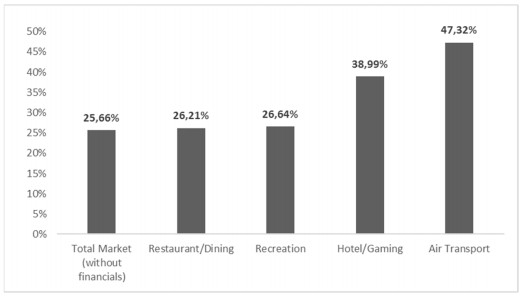









 DownLoad:
DownLoad:
